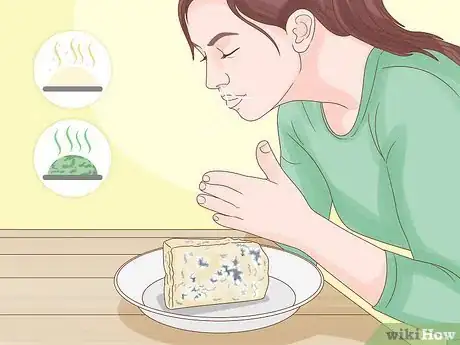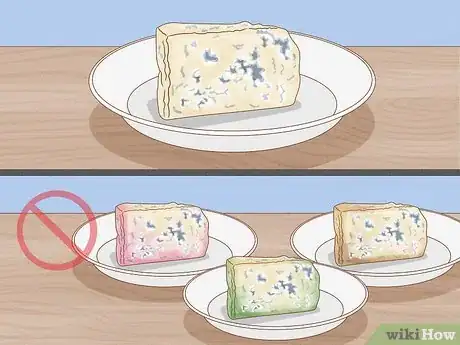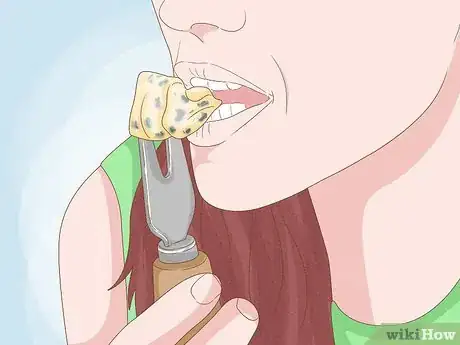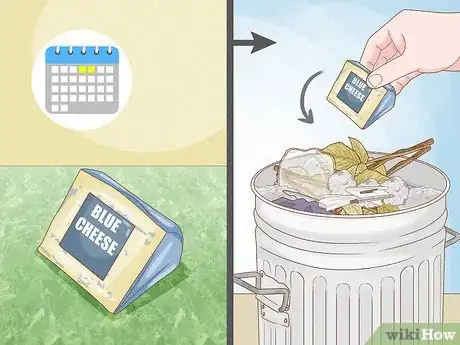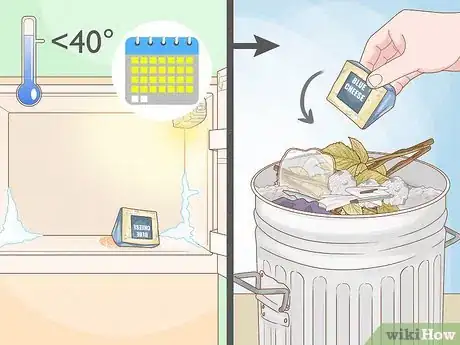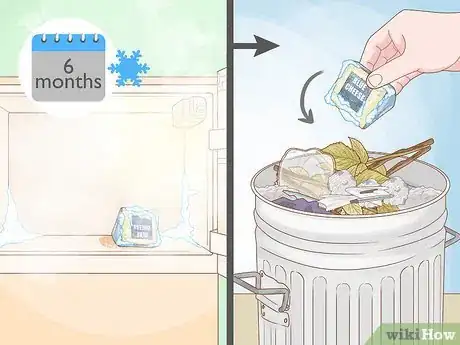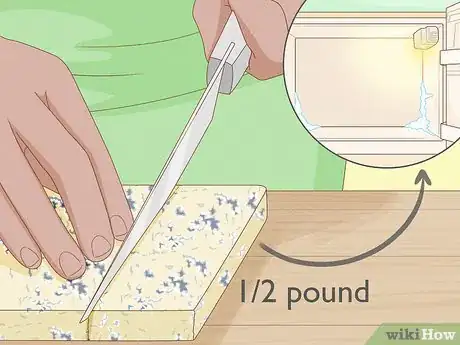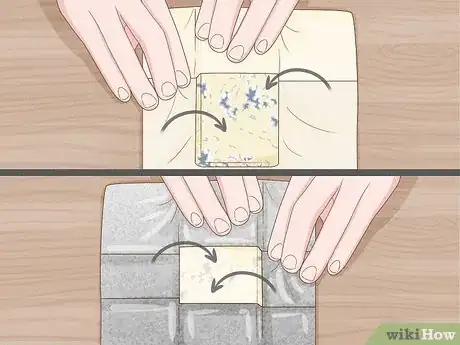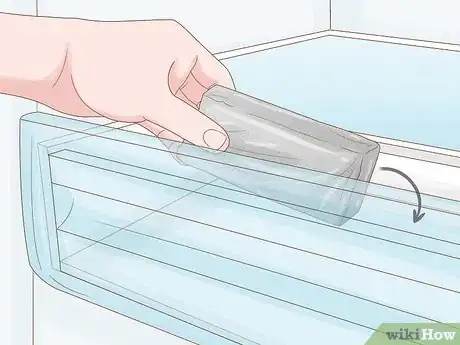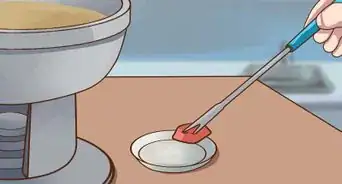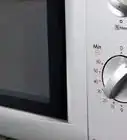This article was co-authored by Ollie George Cigliano. Ollie George Cigliano is a Private Chef, Food Educator, and Owner of Ollie George Cooks, based in Long Beach, California. With over 20 years of experience, she specializes in utilizing fresh, fun ingredients and mixing traditional and innovative cooking techniques. Ollie George holds a BA in Comparative Literature from The University of California, Berkeley, and a Nutrition and Healthy Living Certificate from eCornell University.
wikiHow marks an article as reader-approved once it receives enough positive feedback. This article received 13 testimonials and 80% of readers who voted found it helpful, earning it our reader-approved status.
This article has been viewed 615,853 times.
Blue cheese contains an edible mold that helps give a pungent taste and scent. It's not to everyone's liking but it's perfectly safe to eat. However, blue cheese can go bad just like any other cheese and knowing how to spot this is an important part of enjoying cheese safely.
Steps
Examining the Cheese
-
1Smell the cheese. The best way to tell if your blue cheese has spoiled is to smell it. Fresh blue cheese has a strong scent, but it changes as it starts to go bad. Give the cheese a sniff, and if it has an ammonia-like smell, it is probably spoiled.
- It's a good idea to give blue cheese a smell when you've just brought it home. That way, you'll know what it smells like when it's fresh and be better able to detect when the scent begins to change.
-
2Consider the color(s). Fresh blue cheese already has mold in it, which is typically blue or green in color. However, you want to pay attention to the color of the creamy part of the cheese. It's normally a white, beige, or yellow shade. If you notice that it's started to turn pink, brown, or green, your blue cheese has likely spoiled.
- Just as with the scent of the cheese, make sure to note the color of your blue cheese when it's fresh so it's easier to spot changes if it goes bad.
- In addition to color changes, study the cheese to see if its surface appears slimy or fuzzy, and discard if you notice changes in texture.
Advertisement -
3Taste the cheese. If your blue cheese still smells the same and hasn't changed in color, you can usually tell if it's gone bad by giving it a taste. While fresh blue cheese has a strong, sharp taste, old cheese becomes especially biting when it starts to spoil. If you taste a bit of the blue cheese and it's too strong to enjoy, you should throw it away.
- In most cases, eating a small bit of spoiled blue cheese isn't going to make you sick, so tasting it isn't dangerous.
Following Expiration Dates
-
1Toss unrefrigerated cheese after two days. Blue cheese should be refrigerated to keep it fresh, so if you leave it out on your counter, it's going to spoil more quickly. In most cases, you'll notice that it's gone bad after just a few days. If you're accidentally left blue cheese out, it's best to throw it away if it's been two days or more.
-
2Throw away refrigerated cheese after three to four weeks. When blue cheese is kept in the refrigerator, it can last quite a while. Check the expiration date on your cheese -- in most cases, it will remain good for one to two weeks past the date. That typically means it will last in fridge for three to four weeks.[1]
- To keep your blue cheese fresh as long as possible, make sure your refrigerator temperature isn't set above 40 degrees.
-
3Get rid of frozen cheese after six months. If blue cheese is kept in the freezer at 0 degrees, it can last indefinitely, which means you can freeze excess cheese that you don't plan on using within the month to prevent it from spoiling. However, for best taste and texture, you shouldn't keep it frozen for more than half a year.[2]
- Keep in mind that the taste and texture of blue cheese can change slightly when it's thawed. It loses some of its sharp flavor and usually crumbles more easily.
Storing Blue Cheese
-
1Cut cheese for freezing. If you want to store your blue cheese in the freezer, you must cut it into pieces that are no larger than a ½ pound each. For crumbled blue cheese, divide it into portions that are a similar weight. Use a food scale to weight each slice or portion before you prepare it for storage.[3]
- You can freeze blue cheese that you've already opened or served. Just make sure to cut the remaining cheese wedge or divide crumbles into the ½ pound portions as directed.
-
2Double wrap the cheese. Whether you plan to store blue cheese in the refrigerator or freezer, it needs to be wrapped properly to ensure that it will stay fresh as long as possible. First, wrap the cheese in wax or parchment paper. Next, place plastic wrap or foil over the paper to ensure that it won't dry out.[4]
- If you are freezing the cheese, place the double wrapped piece into a plastic freezer bag to protect it from freezer burn.
- If you're concerned about the cheese picking up the scent or flavors of other items inside your refrigerator, you may want to place it in an airtight container after it's been wrapped for additional protection.
-
3Store on bottom shelf in the refrigerator. The colder that blue cheese, the longer it will stay fresh. Because the lower section of the fridge is usually the coldest, you want to make sure to keep it in on the bottom shelf to preserve for as long as possible. If your refrigerator has drawers at the bottom, that's an ideal place to store blue cheese because they likely won't be opened every time you look in the fridge, so the temperature will remain stable.
Community Q&A
-
QuestionI have seen raw (not pasteurized) blue cheese with a "sell by" date two months after the "packed on" date. Does raw blue cheese last longer than regular blue cheese?
 Community AnswerRaw cheese has live cultures, which can prolong the shelf life of the cheese by keeping away pathogens.
Community AnswerRaw cheese has live cultures, which can prolong the shelf life of the cheese by keeping away pathogens. -
QuestionHow long does homemade blue cheese dressing last in the refrigerator?
 Community AnswerFor the best taste, you should use the dressing within three to five days. After a full week, you should definitely throw it away.
Community AnswerFor the best taste, you should use the dressing within three to five days. After a full week, you should definitely throw it away. -
QuestionShould there be a brown liquid in the cheese?
 Community AnswerNo. As blue cheese goes bad, the cheese begins putrefaction. That's what produces the liquid. Incidentally, the bacteria that are causing this also excrete nitrogenous compounds, which is what gives that "ammonia like" smell associated with rotten cheese, meat, or any other protein-rich sources.
Community AnswerNo. As blue cheese goes bad, the cheese begins putrefaction. That's what produces the liquid. Incidentally, the bacteria that are causing this also excrete nitrogenous compounds, which is what gives that "ammonia like" smell associated with rotten cheese, meat, or any other protein-rich sources.
Warnings
- If only a portion of the cheese appears discolored, slimy, or fuzzy, don't cut off the section and eat the rest of the cheese. It's best to throw away the entire piece because bacteria or mold may still be present.⧼thumbs_response⧽
- If you've eaten blue cheese that you suspect has spoiled and start to feel sick, it's a good idea to consult a doctor.⧼thumbs_response⧽
References
About This Article
To tell if blue cheese is bad, check the expiration date on the packaging if you still have it. Then, hold the cheese under your nose and smell it. If it smells like ammonia, the cheese is bad and you can throw it away. If you don’t want to smell it, look at the color of the creamy part of the cheese, which should be white or beige, not pink, brown, green, or blue. Always throw away unrefrigerated cheese after 2 days, and dispose of refrigerated cheese after 3-4 weeks. For tips on storing blue cheese to prevent it from spoiling, read on!
